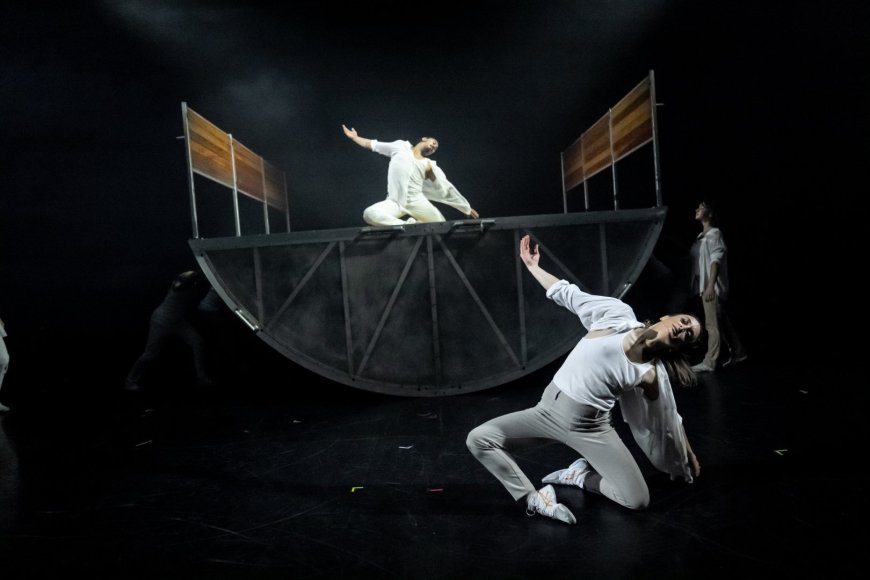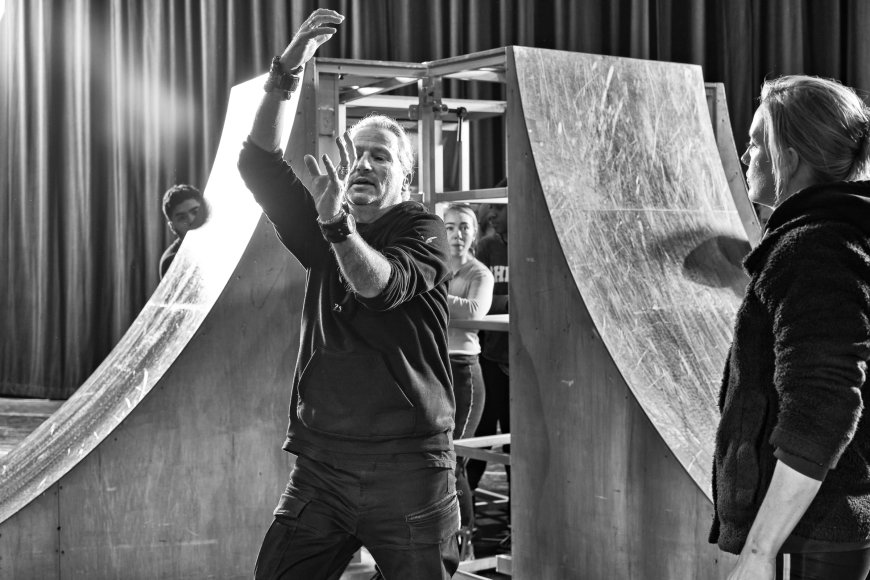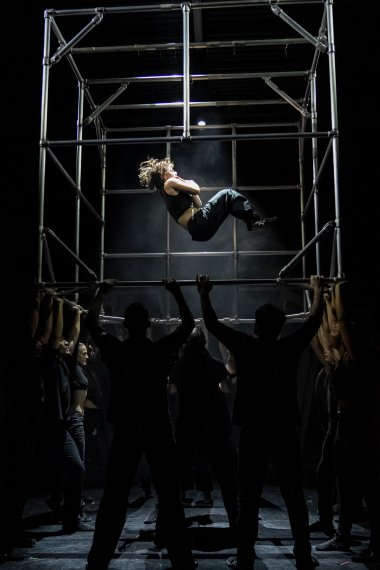
In the 21st century, when our lives have been inundated with technology — from AI and streaming services to social media and the digitalization of just about everything — it’s a relief to know that the art of dance still depends on human bodies making human connections. Enter, then, Jacques Heim, the creative director of the risk-intensive, hyper-physical dance troupe Diavolo | Architecture in Motion, which he founded in 1992. Since then, he has been challenging the conventional wisdom surrounding dance with unique and inventive ways of storytelling.
Now, after performing in more than 250 cities across 14 countries and having been seen by 100 million people worldwide, Diavolo is mounting Escape on the company’s home turf. With 17 performances running through November at its 6,000-square-foot performance space at the Brewery, the troupe is presenting an up-close-and-personal experience choreographed by Heim that promises to be a thrill ride unlike any other.
“The world we live in is chaotic,” said Heim, who directed and choreographed the show. “It’s unpredictable. You don’t know what’s coming tomorrow, [so] there’s this feeling of wanting to escape. That’s what this show is about. The audience arrives into an installation [where] we’re breaking down the boundary between the artist and the audience. It starts right away, where performers meet guests at the door to escort them to their seats.
“Diavolo is now doing their own residency in their own studio, which has been transformed into a black box theater that we call ‘L’Espace Diavolo,’” he added. “They see the structures — the cage, the cubicles, the ramps — and at the end of the show, [they] can ride on some structures, with the protection and guidance of the dancers.”

Indeed, the 70-minute performance features such bespoke structures as a 2.5-ton aluminum wheel (“Humachina”) and the 14-by-17-foot undulating boat showcased in the troupe’s 1999 classic work “Trajectoire.” It also has two acts, with Act 1, according to Heim, being “very intense, fast, it’s in your face,” and Act 2 “more peaceful and elegant.”
Escape, with seating for only 90, is a far more intimate enterprise — and admittedly a more commercial one, too — than last year’s Existencia, which had its world premiere at The Soraya in Northridge and commemorated 30 years since the 1994 Northridge earthquake.
“We’re using popular songs from Harry Styles, Pink Floyd, [and] Alicia Keys,” Heim pointed out. “The show doesn’t want to be esoteric with classical music. The pop songs with lyrics also tell a story, [and] we want that. An entertaining piece can also be moving and impactful.”
Heim knows about commercial viability, with Diavolo having been a finalist on NBC’s “America’s Got Talent” in 2017, and, more recently, having worked with singer Dua Lipa at the 2024 Grammy Awards. Heim also choreographed the permanent Las Vegas Cirque du Soleil show Kà, which features structures inspired by Diavolo’s set pieces. But Escape, with its 22 heroic performers, also explores the human condition and, in so doing, examines themes of danger, endurance, resilience, and community.

In that sense, the work is also the story of Diavolo and its survival — physical, artistic, and financial. It’s about a troupe that has dared to go where no other dance troupe has gone.
“It’s a story within a story,” said Heim, who also works with military personnel as part of Diavolo’s Veterans Program, with proceeds from Escape benefiting the initiative, “because there was no company that was really doing this 33 years ago.”
Another reason Heim said that he wanted to produce Escape was “to create my own destiny, instead of having to go to presenters, where we lose money left and right,” he said. “The other point is that so many young dancers don’t have an outlet for them to be in a show. I realized that I wanted to audition and invite a large group of dancers who would forget their worries of everyday life and the chaos of where we live, and create our own bubble to come together, to collaborate together and to create together.
“By coming together,” Heim continued, “we create our own escape. We’re not creating an art piece but are creating art to find peace. Art is giving us the oxygen that we need as performers. And with the audience sitting up close and personal, seeing the accomplishments, the bruises, the blood, the strength, it really is impactful. It reflects on their own humanity, because they are right there, a foot away from the action, [making] the audience also part of our entire experience."




